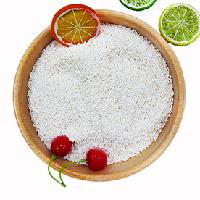-
Categories
-
Pharmaceutical Intermediates
-
Active Pharmaceutical Ingredients
-
Food Additives
- Industrial Coatings
- Agrochemicals
- Dyes and Pigments
- Surfactant
- Flavors and Fragrances
- Chemical Reagents
- Catalyst and Auxiliary
- Natural Products
- Inorganic Chemistry
-
Organic Chemistry
-
Biochemical Engineering
- Analytical Chemistry
-
Cosmetic Ingredient
- Water Treatment Chemical
-
Pharmaceutical Intermediates
Promotion
ECHEMI Mall
Wholesale
Weekly Price
Exhibition
News
-
Trade Service
The Arbor Luxe Conservation Area, the experimental site, asked the Michigan State University team to investigate how planting years affected the trajectory
of restored prairies.
Later in the photo can be seen the local large blue-stemmed grass, taller than the purple flowers of the spotted cornflowers in front, which is native to Europe and is often considered an invasive species
in North America.
Image credit: Lars Brudvig
Bright spot:
Ecologists at Michigan State University have shown that efforts to restore prairie can yield very different results
in terms of biodiversity and function when the only variable is the year prairie was planted.The study also reveals interesting new complexities
in the relationship between biodiversity and the functioning and productivity of restored ecosystems.The study builds on
nearly a decade of work at a unique restoration site at Michigan State University's W.
K.
Kellogg Biological Station.
Proposed in 2013 and completed in 2014, the project is both authentic and controllable, providing fundamental insight into the role of
land history in ecological restoration.
There is a popular saying that those who ignore history are doomed to repeat the mistakes of the past
.
According to a new study published in the journal by Michigan State University, we can't ignore history for another reason: ecology
.
History cannot be ignored if one wants to repeat successful efforts when it comes to restoring the natural state of ecosystems
.
Chris Cattano, an assistant researcher in Michigan State University's Department of Plant Biology and lead author of the new report, said: "Fixes are a bit notorious
because very similar approaches lead to different outcomes.
" "There are a lot of changes
.
"
Catano works with
Professor Lars Bruderwig from the Faculty of Natural Sciences.
One of the projects of Brudwig's lab is to elucidate the fundamental factors
that lead to this change.
With support from the National Science Foundation, the new study focuses on one of these factors from a biodiversity perspective — when
a piece of land is restored.
"What we see is that the past matters
.
History is important," Katano said
.
Working on a site that was once an active airstrip, the team restored 18 plots of land to grassland
.
The researchers tried to keep all recovery conditions the same, except for the time
when recovery began.
They then tracked how different biomes clustered together on these plots—for example, which plant species grew and which other organisms
they attracted.
In addition to describing biodiversity, the team also analyzed how it affects the downstream ecological functions
of a massif.
Brudvig, who is also a core faculty member at Michigan State University's Ecology, Evolution, and Behavior Program (EEB), said, "This has been a big problem in ecology for nearly 30 years, which is understanding the impact
of biodiversity on ecosystem functioning.
"
Somewhat surprisingly, in the team's experiments, more biodiversity did not always translate into more functional ecosystems
.
The team says there is a lot of evidence to support a positive relationship between biodiversity and ecosystem functioning, but many of these studies have been conducted
in highly controlled environments.
The team observed that this relationship is more complex
in a more natural environment.
"We see relationships
that go from positive, neutral to negative," Brudvig said.
"In nature, the result is a huge hybrid package
.
"
Brudvig stressed that the study does not negate previous results, nor does it negate the conclusion that, in general, more biodiversity is a good thing
.
In individual cases, however, Brudvig's team is showing that biodiversity impacts are subtle and complex – it cannot be summed up
in a single value or measured quantity.
"There is no single number on biodiversity that tells you the whole story
," Katano said.
"In this case, the identities of key species and their characteristics, hidden behind the numbers, are the key
to really influencing how ecosystems function.
"







